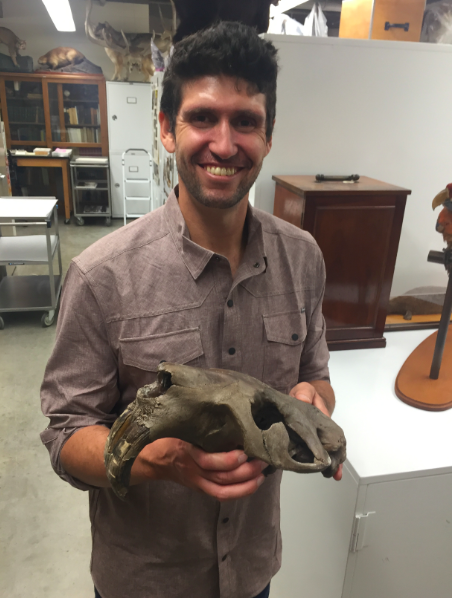
This week I’m in Madison, serving as writer-in-residence at the University of Wisconsin, a gig that’s introduced me to many wonderful faculty, staff, and students. Among my favorite encounters, however, has been with a university resident who’s been dead for around 13,000 years. On a tour of the zoology museum, I had the opportunity to hold the skull of Castoroides ohioensis — a species of beaver, nearly as large as a black bear, that went extinct during the Pleistocene. (This individual was found in a peat bog, hence the dark stain.) You’d think that such a gargantuan beaver built Hoover-sized dams, but, unlike its modern cousin, Castoroides likely wasn’t a dammer or tree-feller at all, subsisting on aquatic vegetation instead of bark. In fact, research suggests that that’s why Castoroides died out: While the diminutive but industrious Castor canadensis was engineering ponds in which to survive a hotter, more arid late-Pleistocene climate, giant beavers were wallowing futilely in vanishing wetlands. What Castoroides possessed in mass, it lacked in architectural aptitude.
Regardless, holding this specimen was quite the thrill. Beaver bucket-list item checked!